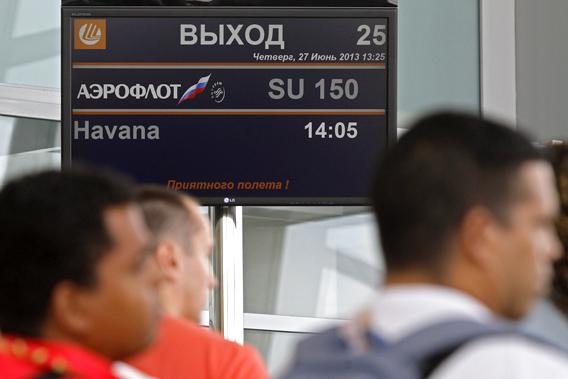NSA leaker Edward Snowden has reportedly spent the last week in the transit zone at Moscow’s Sheremetyevo International Airport, although journalists have been unable to spot him. What can you find in a transit zone?
Hotels, restaurants, and unfortunate souls. You’re probably familiar with the public portion of a transit zone, which typically offers plenty of amenities. Sheremetyevo airport’s transit zone encompasses three terminals and includes both the V-Express capsule hotel and one wing of the Novotel. Travelers can buy a Vopper from Burger King or nosh on a Cinnabon.
There’s a separate area, however, that few travelers ever see: the detention rooms. Almost all international airports have these spaces, where refugees and others with uncertain immigration status wait to be admitted to the country or shipped back from whence they came. Human rights advocates say the transit-zone detention facilities in Eastern European airports are among the world’s worst. They are one- or two-room suites with more detainees than beds and sometimes just one toilet for every 20 people. The airlines are usually responsible for detainee care, and some of them allegedly scrimp on food and medicine. There is limited contact with the outside world, and in the worst transit zones, like some in Bulgaria, Romania, and the Slovak Republic, refugees are given no opportunity to meet with a lawyer or file an asylum claim. The rooms in some transit zones are locked, although detainees are usually allowed to wander parts of the airport when no other travelers are around. People have spent as much as 20 months living in the transit zone in Sheremetyevo airport. (The most famous transit-zone dweller was Iranian refugee Mehran Karimi Nasseri, who stayed in Terminal 1 of Charles de Gaulle Airport for 17 years, but he moved freely within the terminal.)
Snowden could be relaxing at the Novotel or stewing in a detention pen, depending on how Russian authorities have decided to treat him. But there’s a third possibility, which requires a bit of background to understand.
Governments established the first transit zones as spaces where national tax laws did not apply. At the time, international travelers had to obtain transit visas even if they stayed inside the airport. Processing all those visas eventually became a burden, and the tax-free transit zones became areas where immigration laws didn’t apply, either.
National immigration authorities soon realized that the transit zones could be used not only to eliminate administrative hassles, but to exclude unwanted people. International law—as well as domestic law, in most countries—provides extensive protections for refugees. The principle of non-refoulement, for example, prohibits governments from sending new arrivals back to countries where they will be persecuted. However, if a refugee sets foot only in a transit zone, some countries argue that she hasn’t technically arrived in the country, and she can be sent home without legal protections. Although the European Court of Human Rights rejected this position, many countries have vastly expanded their transit zones to enable them to accommodate refugees while still maintaining the right to deport them.
Transit zones can now refer either to physical spaces or to amorphous legal concepts. The transit zone around Paris’ Charles de Gaulle Airport, for example, includes hospitals and a court more than 12 miles away. Detainees who travel from the airport to these facilities are legally considered to be moving inside a floating transit zone. The size and shape of a transit zone is therefore a matter left to the discretion of national authorities, and it’s possible Russian authorities have taken advantage of this legal technicality. If Edward Snowden isn’t sleeping at the Novotel or in a detention room at Sheremetyevo airport, he may be living in his own personal transit-zone bubble virtually anywhere in Moscow.
Got a question about today’s news? Ask the Explainer
Explainer thanks Thomas Gammeltoft-Hansen of the Danish Institute for Human Rights.
